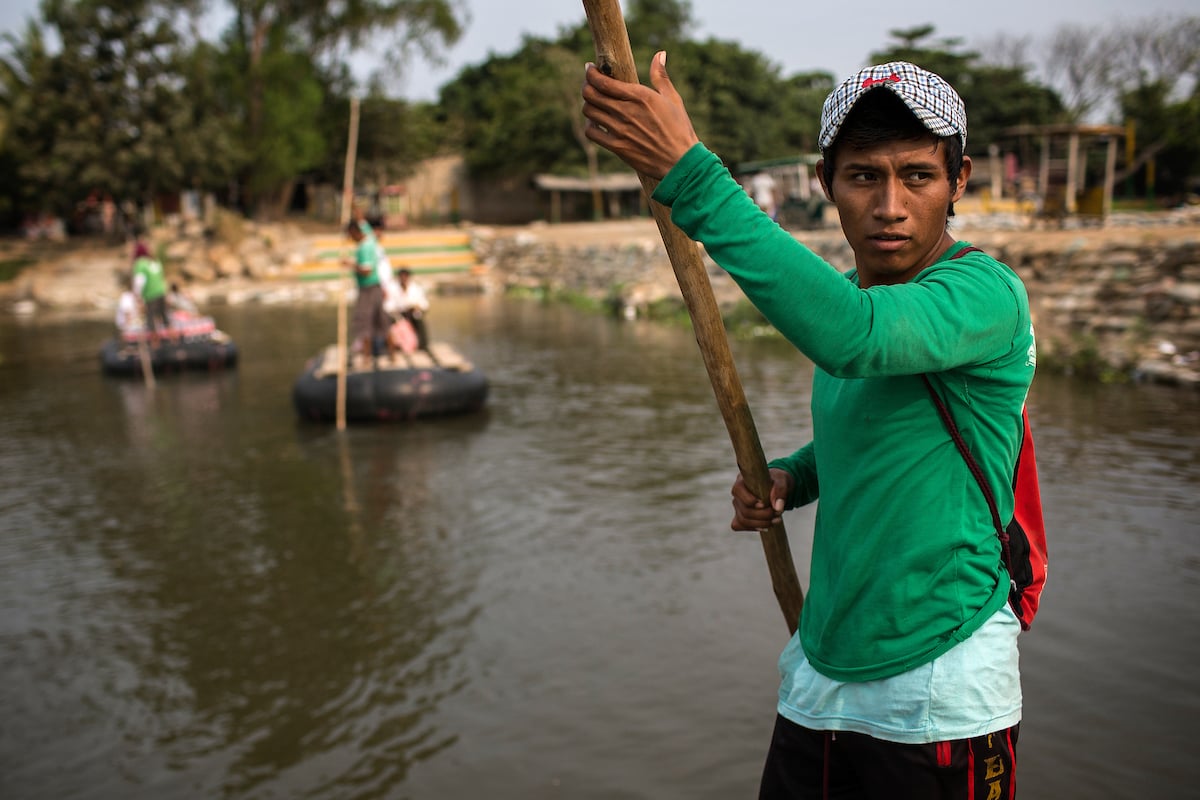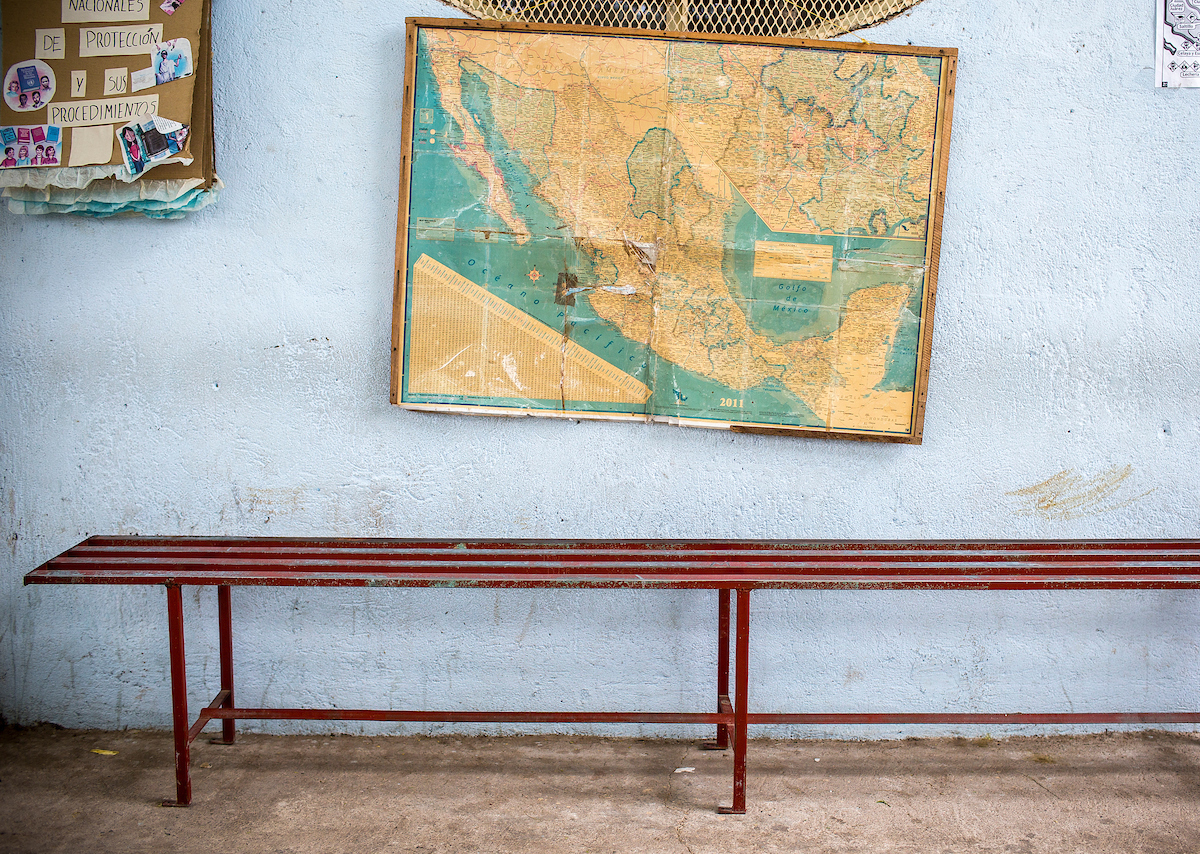From one river to the next
To reach the United States, migrants fleeing Central America endure a brutal northward journey.
Oct. 31, 2016
CIUDAD TECUN UMAN, Guatemala — By the time they stand on the southern bank of the first river — the Suchiate, a 100-mile ribbon of fouled water separating Mexico from Guatemala — the migrants have traveled several hundred miles.
About 1,200 miles farther still is the second river — the Rio Grande, threshold of the United States. In between is Mexico, a transit of hard terrain and brutal passage.
The families, young men, pregnant women and unaccompanied children who cross the Suchiate and head north will largely place their fates in the hands of strangers. Strangers will guide, feed and shelter many along the way. Strangers will rob, beat, rape and arrest others.
People fleeing for their lives are willing to accept those terms.
Most come from El Salvador, Honduras and Guatemala — countries consumed by poverty and drug- and gang-related violence.
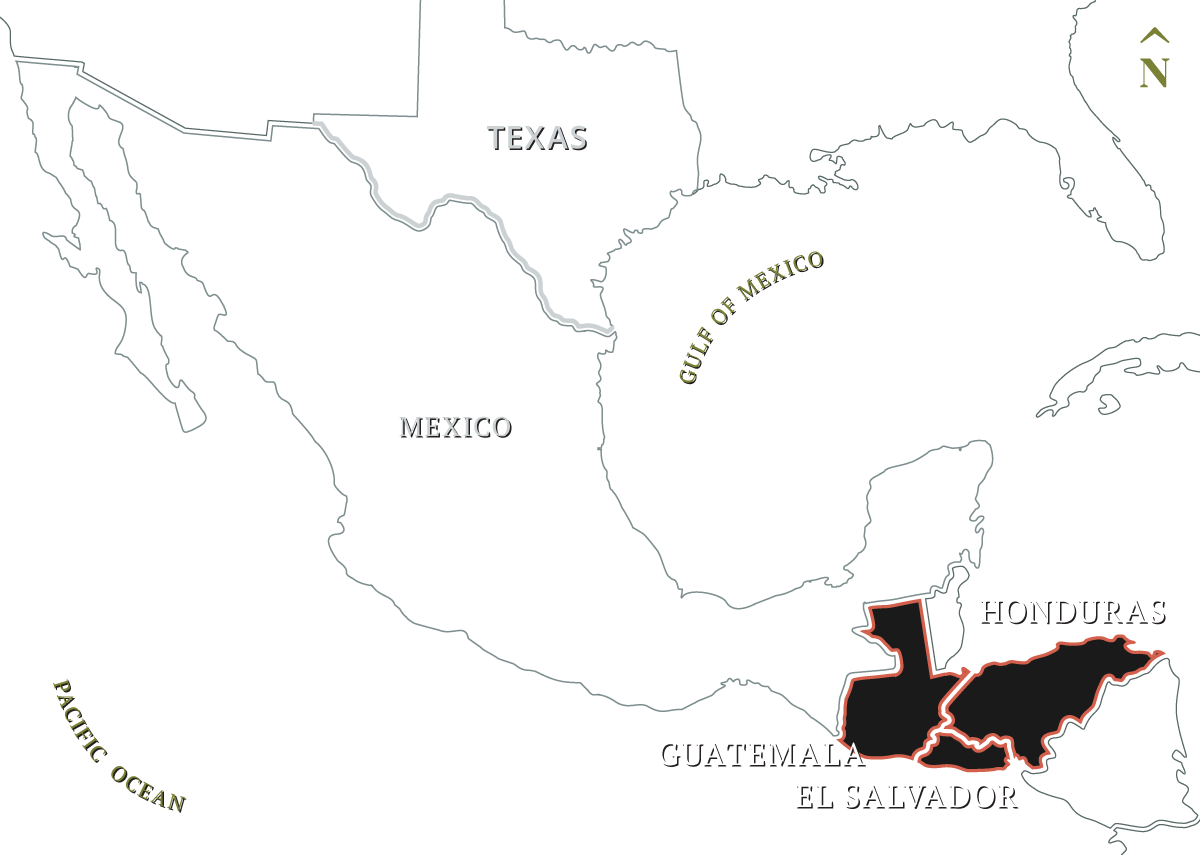
Migrants tell of gangs in their home countries forcibly recruiting young men — or killing those who refuse to join. Young girls who are coerced into becoming romantic partners. Small-business owners whose lives and families are threatened if they refuse to pay gang extortion.

A majority of those who choose northward migration, particularly the women and children, pay smugglers thousands of dollars in hopes of safe passage.
The poorest undertake the journey on their own, making life-and-death decisions as they travel through sweltering heat and stifling humidity.
They carry little money and perhaps a backpack stuffed with clothes and a handful of belongings. Some will reach Texas with empty pockets and just the clothes on their backs — if they make it at all from one river to the next.
• CIUDAD HIDALGO, CHIAPAS
Mexico's southern border is more a marketplace of unregulated commerce than an organized effort at immigration control. People and goods flow constantly back and forth across the Suchiate River, which can get low enough during droughts that people simply walk across into Ciudad Hidalgo in the Mexican state of Chiapas.
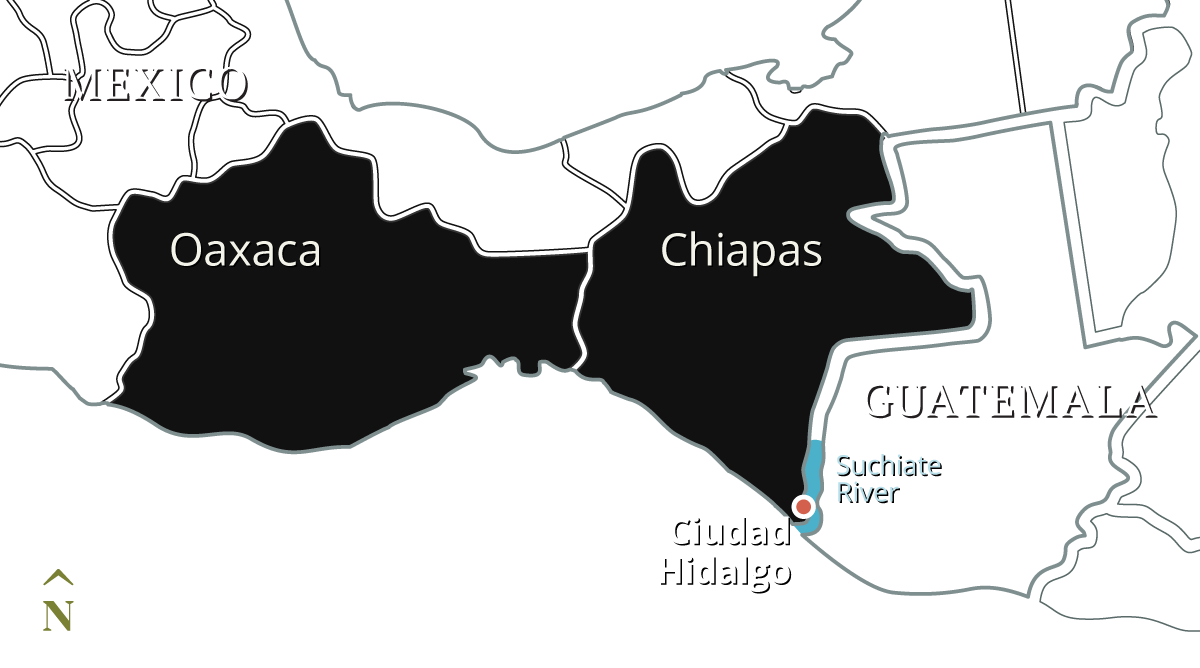

An official point of entry, an international bridge, stands virtually unused. Instead, people ride on makeshift rafts crafted from wooden slats tied across huge inner tubes from truck tires.
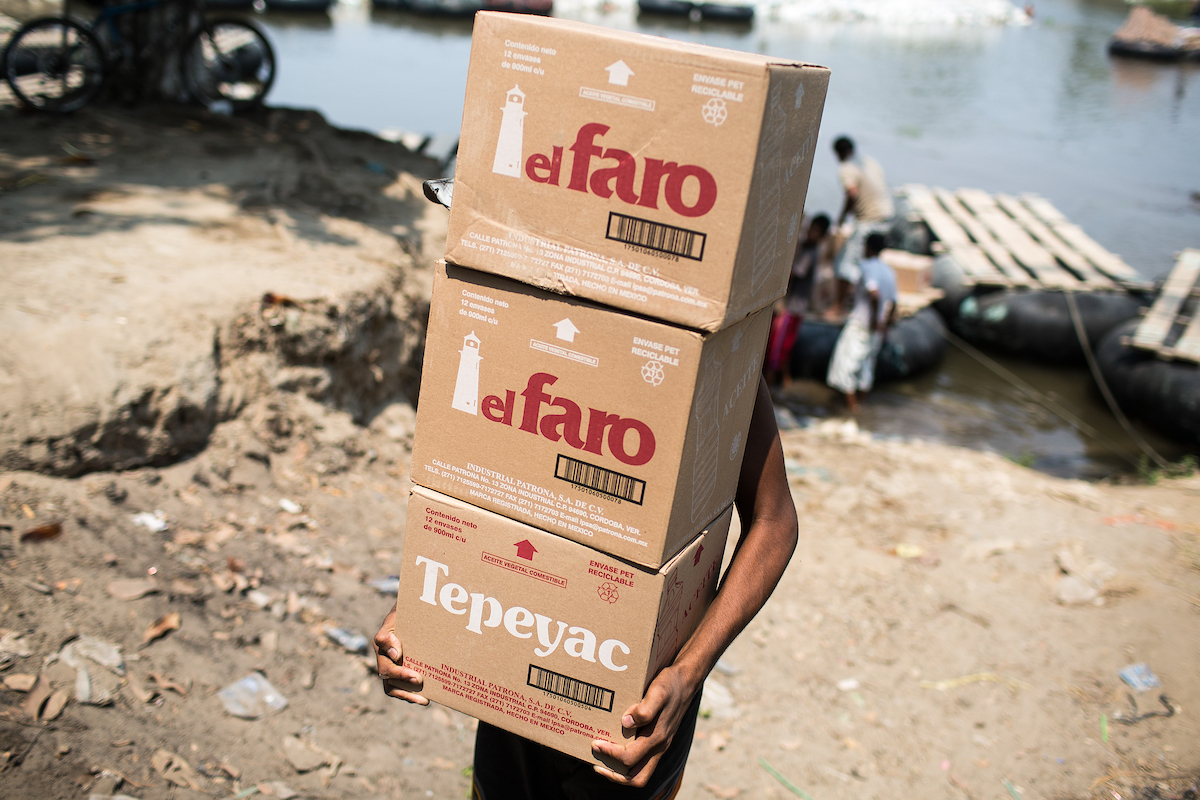
Guatemalans make the trip to buy clothes, food and other goods for pesos in Mexico, then cross back and resell them on their side of the border for a higher price in quetzales. Amid the traffic, it’s virtually impossible to tell migrants from entrepreneurs at the river.
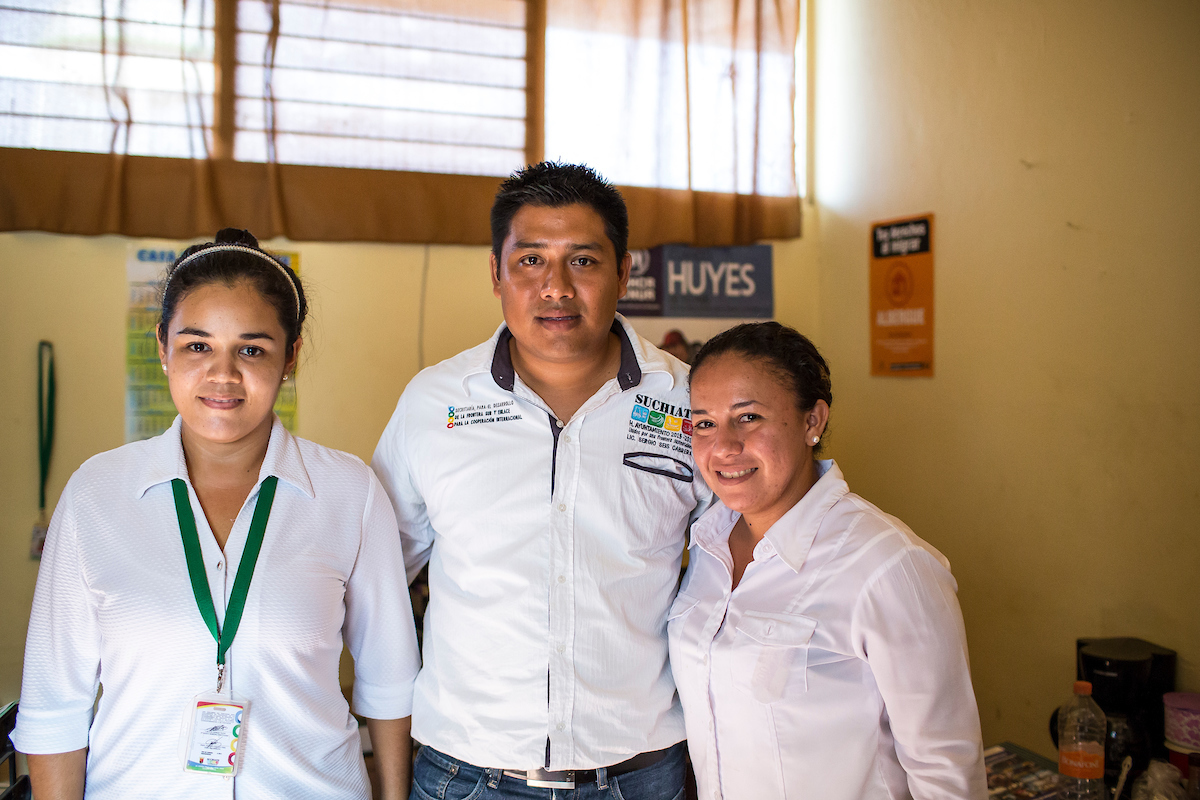
In Ciudad Hidalgo, some seek help at Dirección de Atención a Personas Migrantes y Refugiadas, where Goretti Fernanda Orozco Muñoz and her two co-workers offer assistance to desperate migrants and those seeking to apply for refugee status in Mexico. The aid workers often buy water and meals for migrants, paying out of their own pockets.
A map hanging on the center's wall shows which states along eastern coast of Mexico up to Texas have migrant shelters — a path many of the migrants will attempt to follow over the next several weeks or months.

Workers give migrants information on places they can stop for sleep or a meal and send them on their way, knowing that some will be deported or might not make it alive.

If they have the money — or haven't already been mugged and robbed — those headed north can pay 29 to 33 pesos for a colectivo, a minivan commonly used for public transportation, or car to take them into Tapachula, the closest Mexican city with a shelter for migrants.
• TAPACHULA, CHIAPAS
Those that don't have the money walk — 23 miles.
Reaching Tapachula requires avoiding a series of pop-up checkpoints along the way set up by Mexican immigration officials. The migrants riding in taxis hop out and cautiously walk through the brush to skirt the checkpoints, hoping they won't be robbed by thieves.
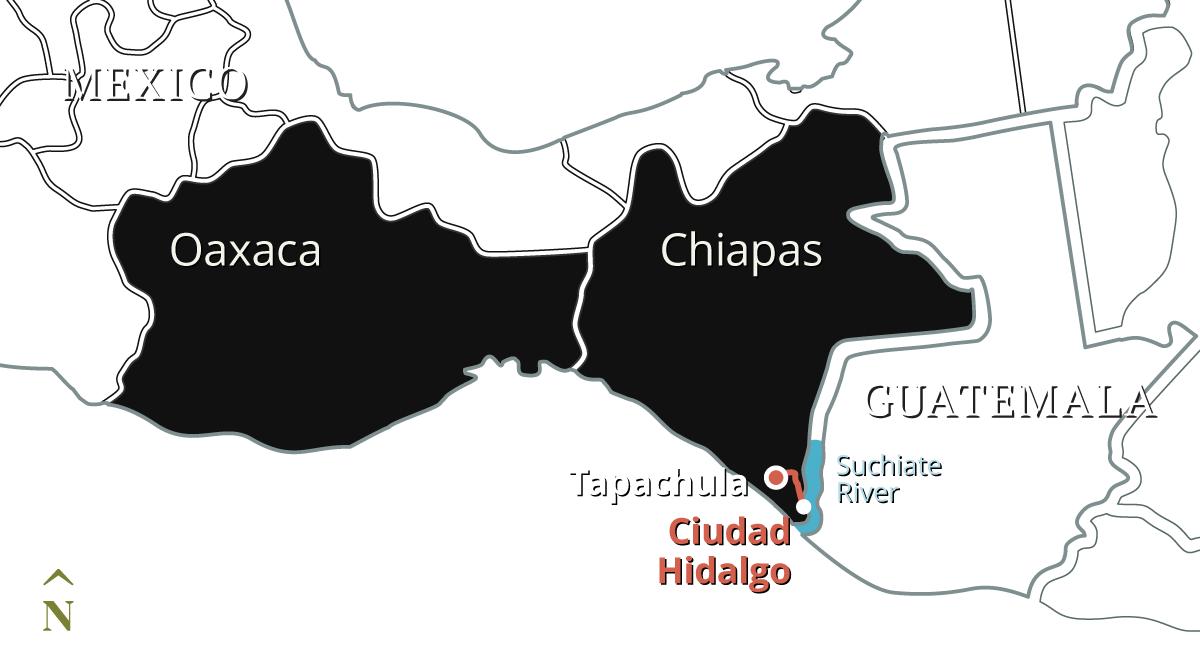

At the bottom of a steep hill in a working-class neighborhood of Tapachula is the Albergue Belén, one of the most established migrant shelters along the route, easily spotted by its bright orange walls.
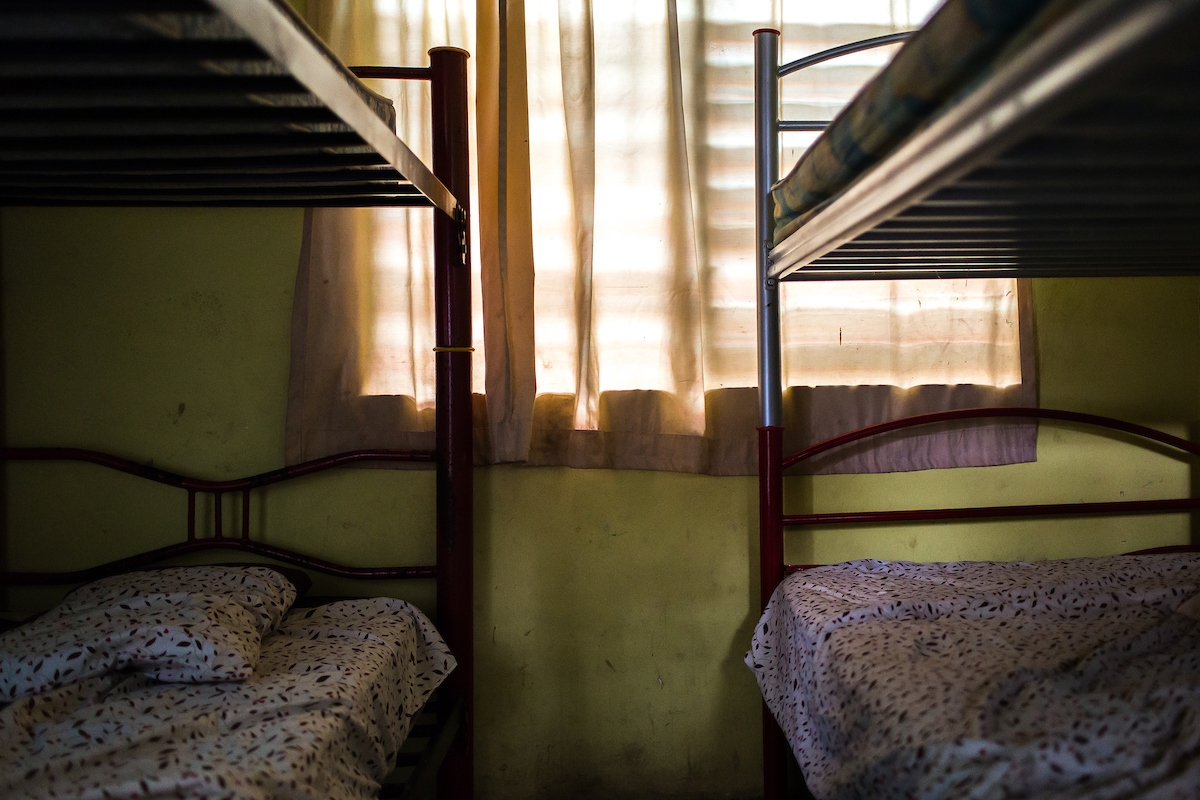
It's an early stop in a long journey, but already the migrants’ unassuming gratitude is apparent when they're offered a place to rest. Most migrants stay for a night or two, sleeping in small dormitories on metal bunk beds with thin mattresses.

This isn’t the first trek through Mexico for many of the migrants who arrive here. A former soldier in the Salvadoran army, Osvaldo Flores Velasquez, said he’s trying to get back to his family, including two children, he left behind in Houston following an immigration raid at the Fiesta grocery store where he worked for four years.
Flores Velasquez began his life in the United States in the 1980s when he sought political asylum after a civil war in his home country. He was allowed to stay temporarily but couldn't extend his legal status after 30 years of living in the United States.
“I haven’t seen them for a year,” Flores Velasquez said while tracing out routes on a large map mounted to one of the shelter’s walls. “My siblings, my mom, my wife, everyone is still there.” With his belongings stashed in a large black trash bag swung over his shoulder, he stares at the distance marker taped over the map: 2,930 kilometers — 1,820 miles — to Houston.
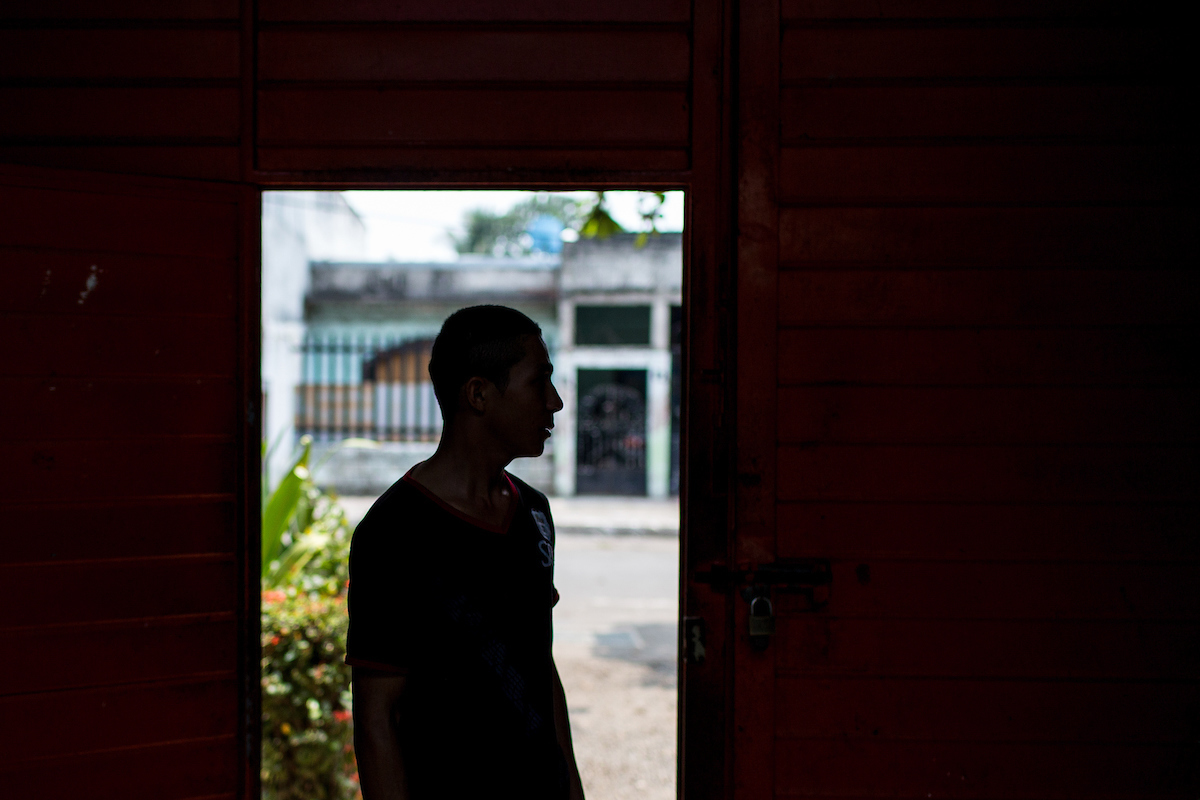
The migrants are quick to respond when asked where they're headed — Texas, California, New York, Virginia or really anywhere in the country they can reach — but most are uncertain of exactly which path will get them there. The precarious navigation underscores how desperate some were to flee their homes, leaving behind life as they knew it out of a fierce desperation to live another day.
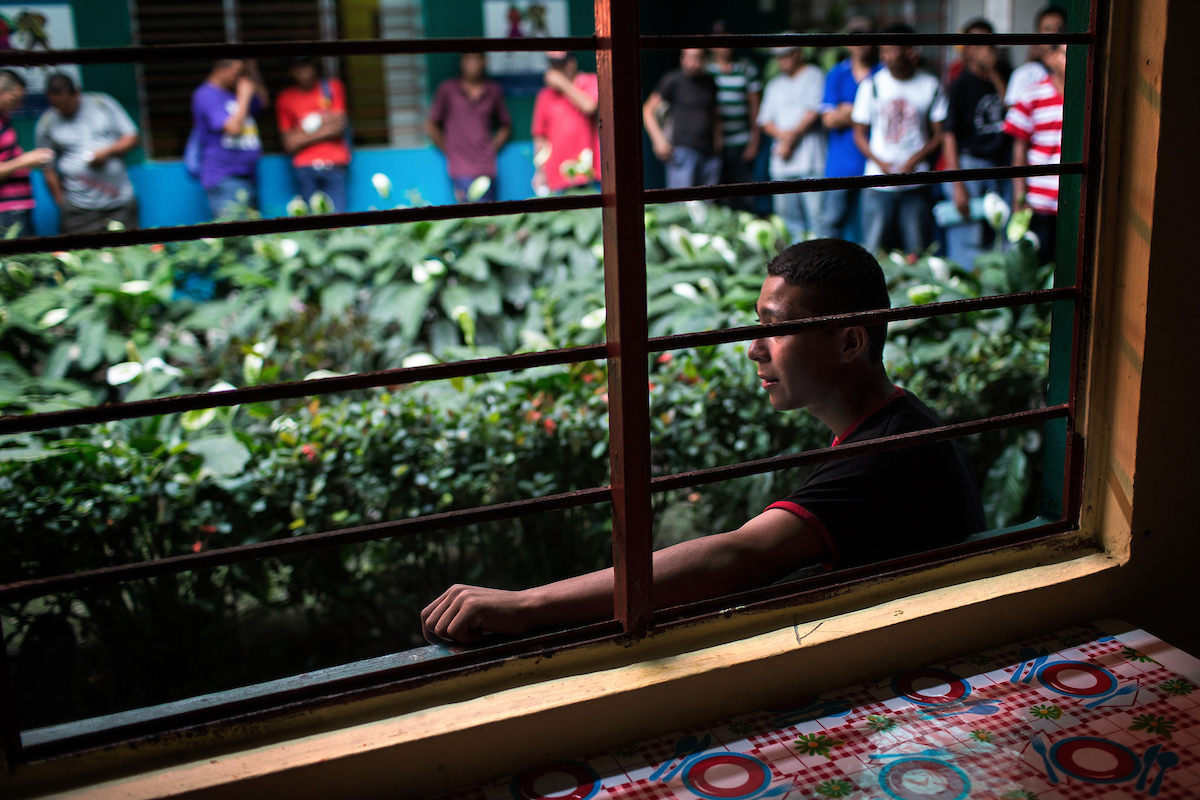
On a steamy April evening, a bell peals through the shelter’s courtyard at around 5:15 p.m, alerting the migrants to line up outside the dining area. Among them are several children traveling alone and a few families with kids.

That night's dinner consists of watery black beans and scrambled eggs, donated earlier in the day by a local rancher. Though they sit side by side at large tables, the migrants mostly keep to themselves, sipping milk from green plastic cups. For some, it’ll be their only meal of the day.

It’s a short reprieve from the perils of their journey, perils that have grown since the United States — struggling to deal with the growing waves of Central American immigrants reaching its soil — began pressuring Mexico to crack down on migrants making the northward trek.
• ARRIAGA, CHIAPAS
About 150 miles north of Tapachula lies Arriaga, Chiapas. For years, migrants reaching the town would catch cargo trains — popularly known as “La Bestia” or “The Beast” — to ride to the U.S. border. Photos of immigrants, including young children, riding illegally on train roofs and flatbed cars became some of the most iconic images of the migration.

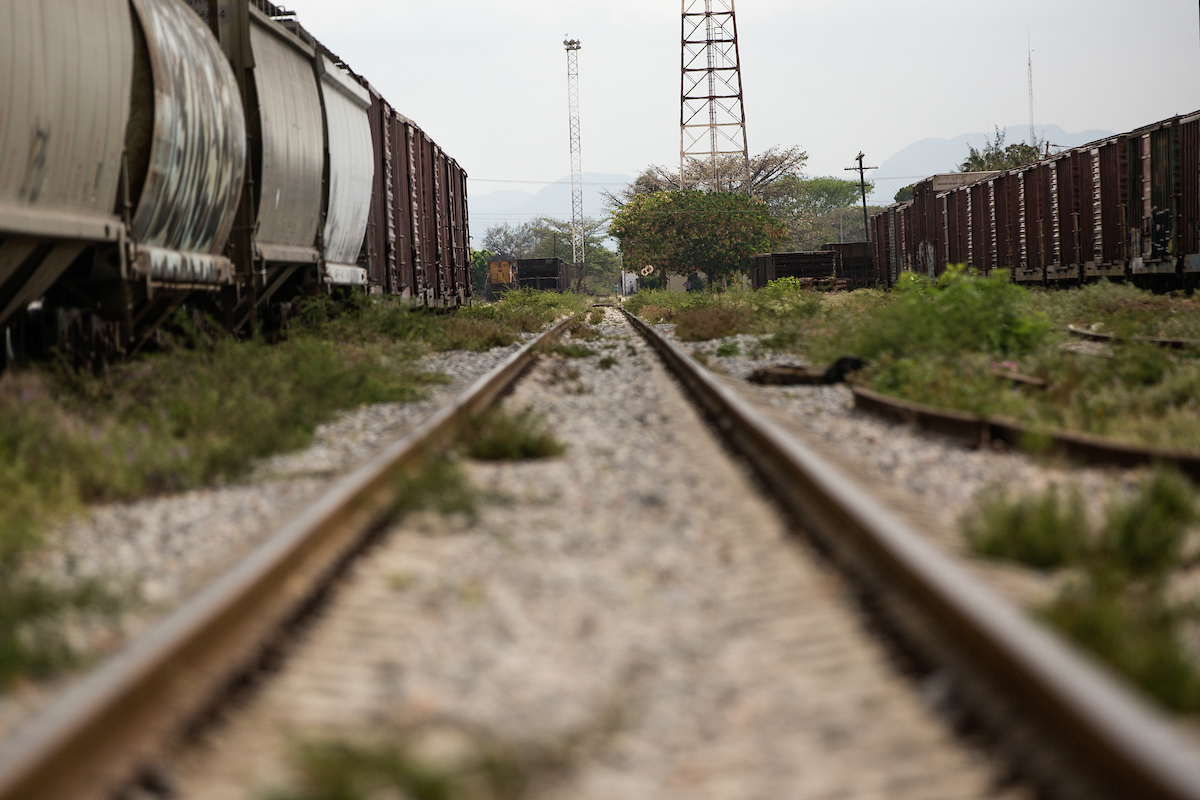
Today, the train tracks that run through this tiny town are desolate. As part of Mexico’s response to U.S. pressure, railroad officials in 2014 vowed to triple the train’s speed to make it more difficult for people to jump on. Combined with regular raids to pluck migrants off the train, Mexico has significantly reduced the use of the train.
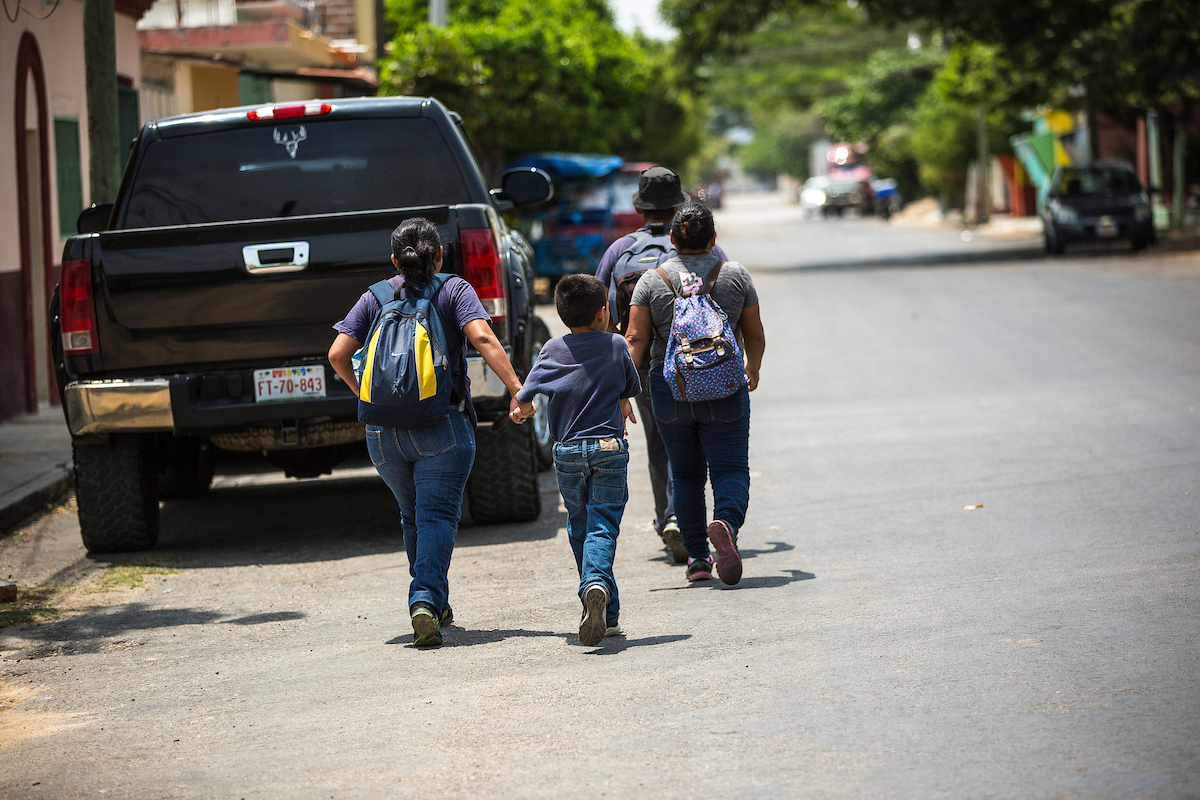
Some continue to plan their journeys around it. Under the blazing sun in late April, El Salvador native Jaime Eduardo Gonzalez and his wife rushed through town to find a hiding spot where they would wait for the train to pass later that night. He knows it's not easy to get on the train or make it deep into Mexico, much less to cross into the United States. Still, he's clinging onto blind faith.
"It's not easy to cross into the United States," Gonzalez said, half out of breath. "But I believe God will open doors for us and we'll be able to get in."
• CHAHUITES, OAXACA
Those not willing to risk the train are left to walk, exposing themselves to rough terrain, grueling weather and dangers hidden in the brush. It's almost 25 miles to the next shelter in Chahuites, Oaxaca. Migrants can be seen along the street lining the railroad tracks. Fearing discovery by immigration officials, they often cut through a cemetery.
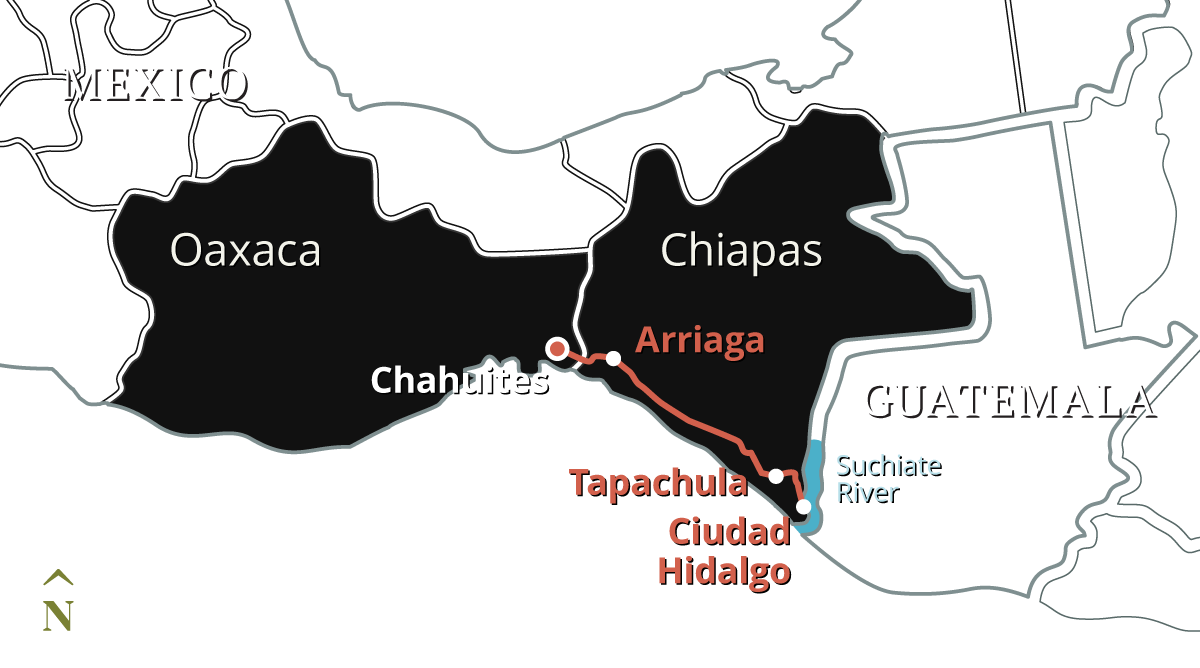

That’s where Natividad Rosales de Portillo, her husband Dublas Giovanni Portillo and their two-year-old daughter were confronted in April by two men dressed in all black brandishing a gun and a machete who demanded their money, their cellphones and their bags. They were days into their journey fleeing from El Salvador, where her husband drove a taxi.
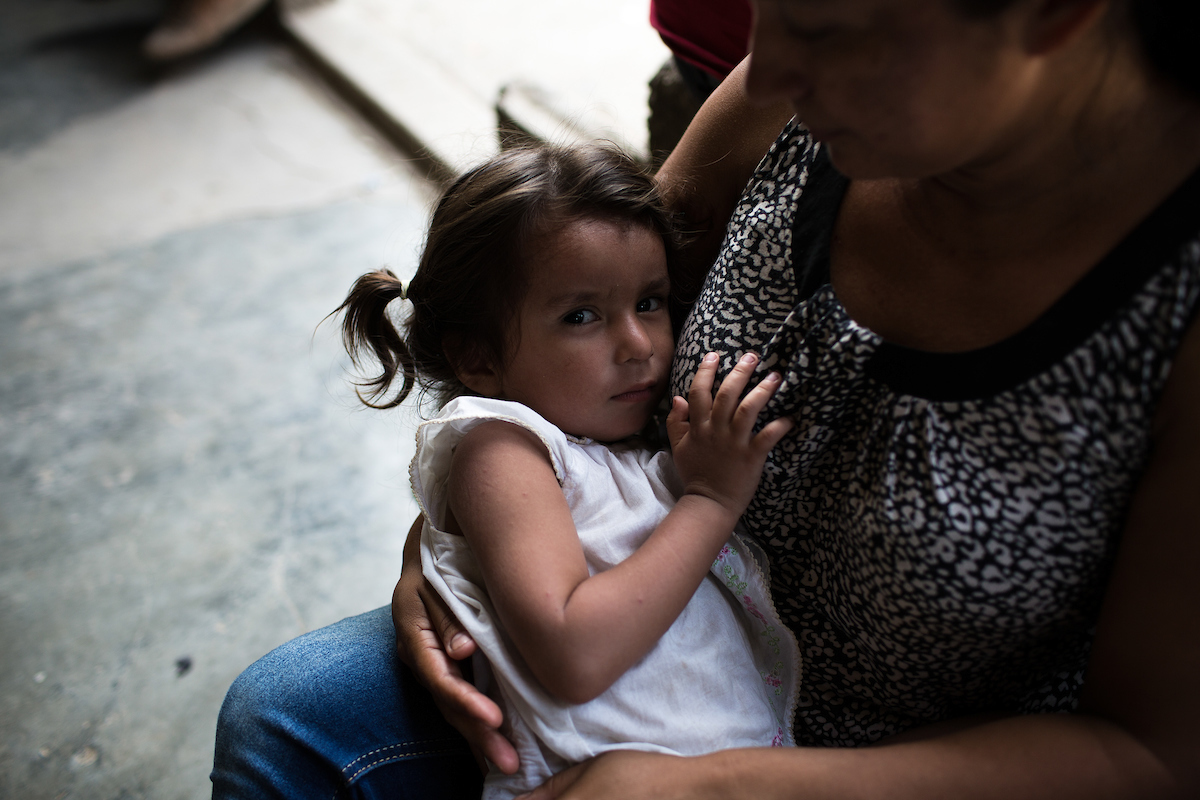
During the confrontation, her husband was thrown to the ground and punched repeatedly. Rosales de Portillo was sexually assaulted in front of their daughter.
“We left from there with just our clothes,” Rosales de Portillo said through tears while sitting on the floor at the Centro de Ayuda Humanitaria a Migrantes, the next migrant shelter in Chahuites. “We got out with nothing.”
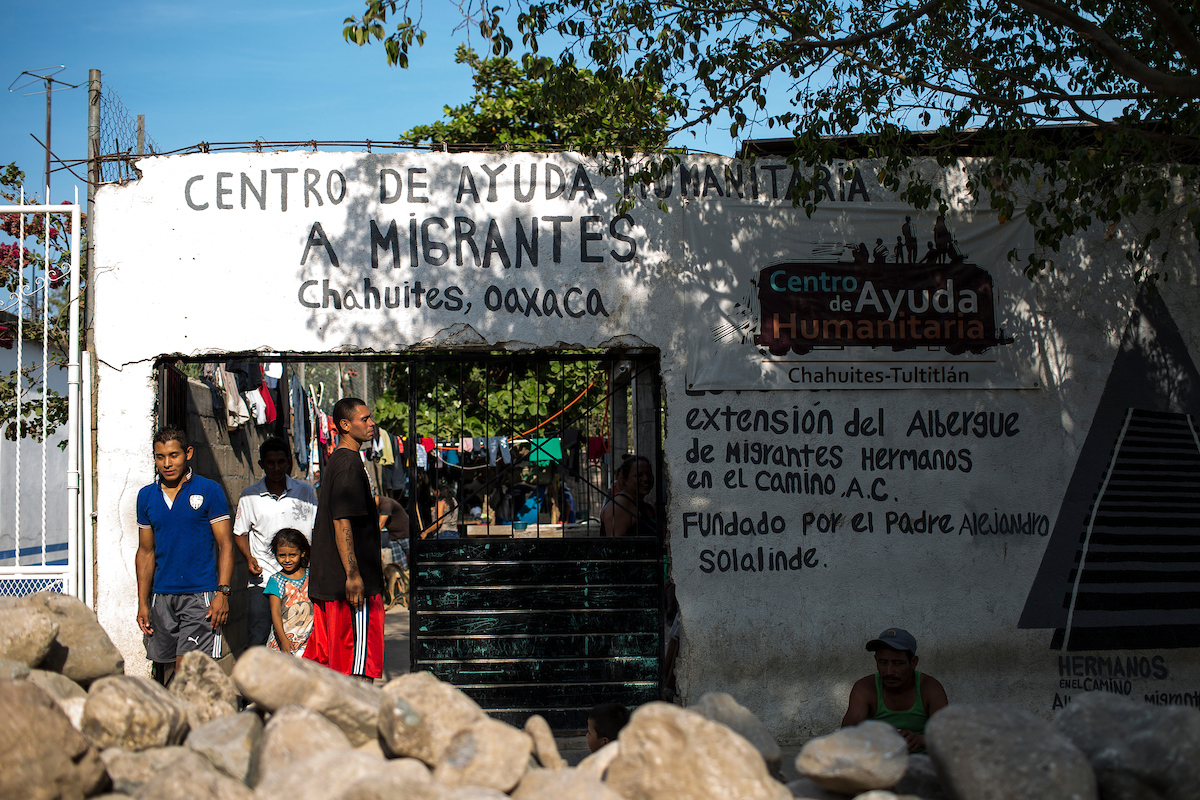
When the government began cracking down on the cargo trains in 2014, volunteers helped establish the shelter in this dusty enclave of concrete and cinderblock houses so migrants wouldn't have to walk almost 100 miles from Arriaga to the next shelter in Ixtepec, Oaxaca, without respite.

The migrants did not have “an oasis” where they could rest, said Armando Medina, the 25-year-old shelter director who arrived in Mexico as a migrant six years ago.
But while the Chahuites shelter may offer temporary safe haven, it’s far from what most would consider an oasis.
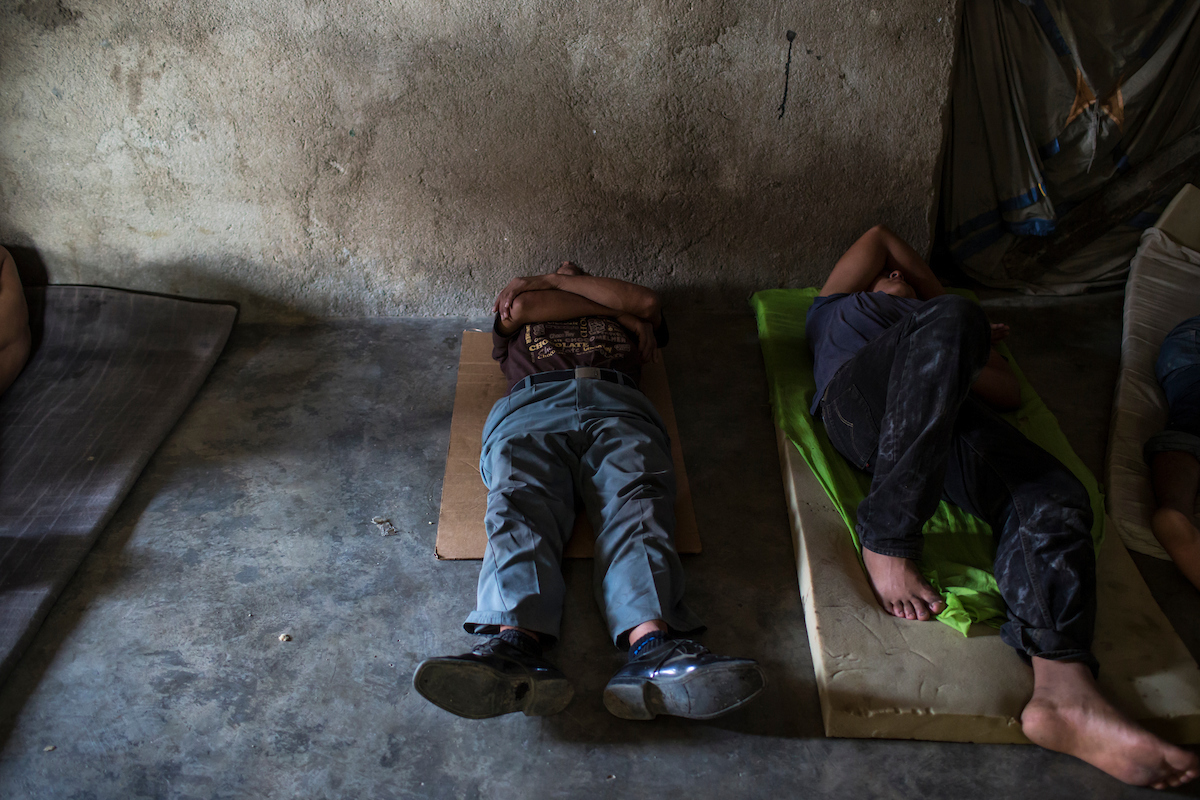
The sleeping quarters consist of one large room with cement walls. Migrants unroll two-inch-thick pieces of foam as beds on the floor.
Others rest on cardboard or makeshift hammocks under the shade of a large tree and recently washed clothes hung on a line.
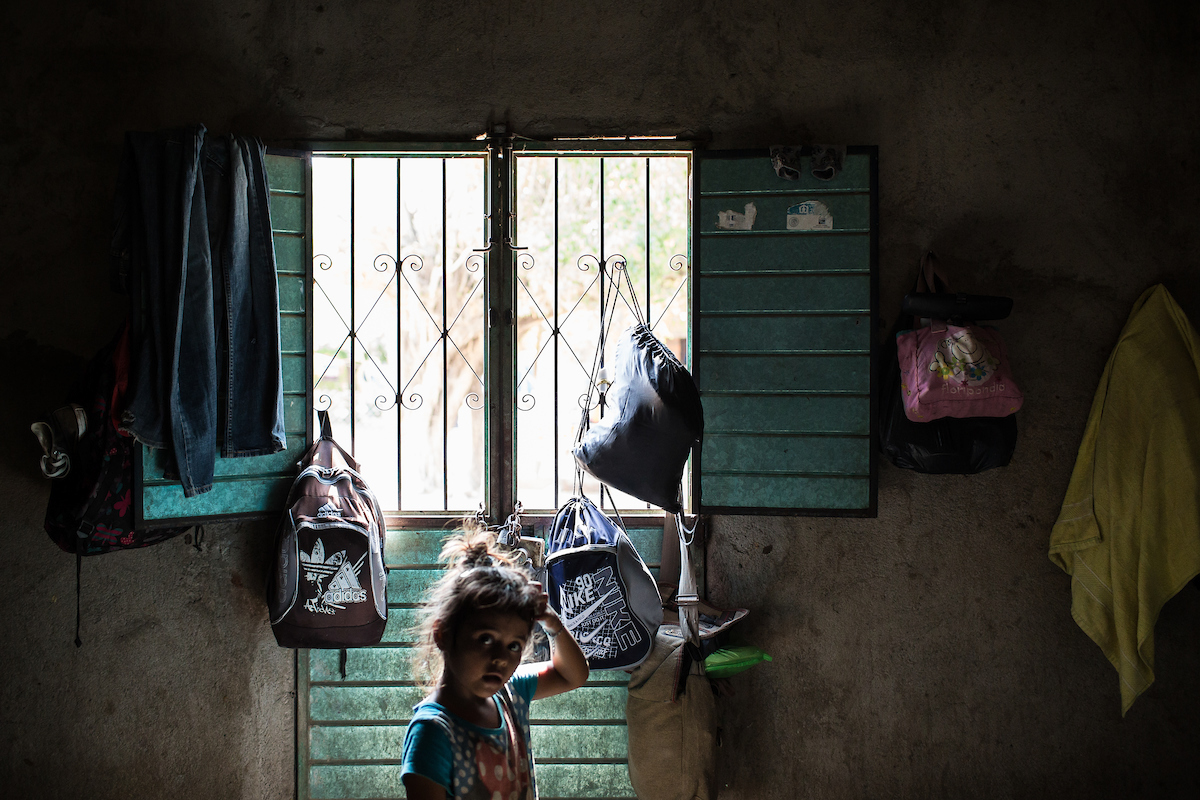
Initially, locals weren’t happy with migrants arriving in what’s considered the mango capital of Mexico.
“There are people that don’t accept the migrants because they think they’re only here to steal, to take their jobs,” Medina said. “They refuse to open their eyes and realize that a majority of them are coming here in hopes of a better life for their families and for themselves.”
The city now serves as a sort of migratory sanctuary after municipal officials signed an ordinance indicating that immigration officials cannot come into the city limits to carry out raids.

But it’s the scoundrels and thieves that worry Rosario Suvillaga Cerrato, a Honduran mother headed to Miami, following her oldest daughter who fled because she was being persecuted by gang members.
Suvillaga Cerrato lost three toes while attempting to ride La Bestia during a previous trek north, but she plans to catch the train again during this trip to avoid more physical violence. When she arrived at the shelter in Chahuites days before, she had been assaulted by five men who undressed her and groped her.
“Sometimes when bad things happen to you, you gain courage,” Suvillaga Cerrato said.
• IXTEPEC, OAXACA
When migrants reach the Albergue de Migrantes-Hermanos en el Camino shelter in Ixtepec, Oaxaca, they are spent, but they are almost through the riskiest stretch of southern Mexico where the crackdown on illegal immigration is the toughest. Many have navigated rough terrain, hidden in forests and cautiously walked along winding highways with the Mexican mountains in the distance, uncertain how far they would get. For some, it’s been weeks since they left home.

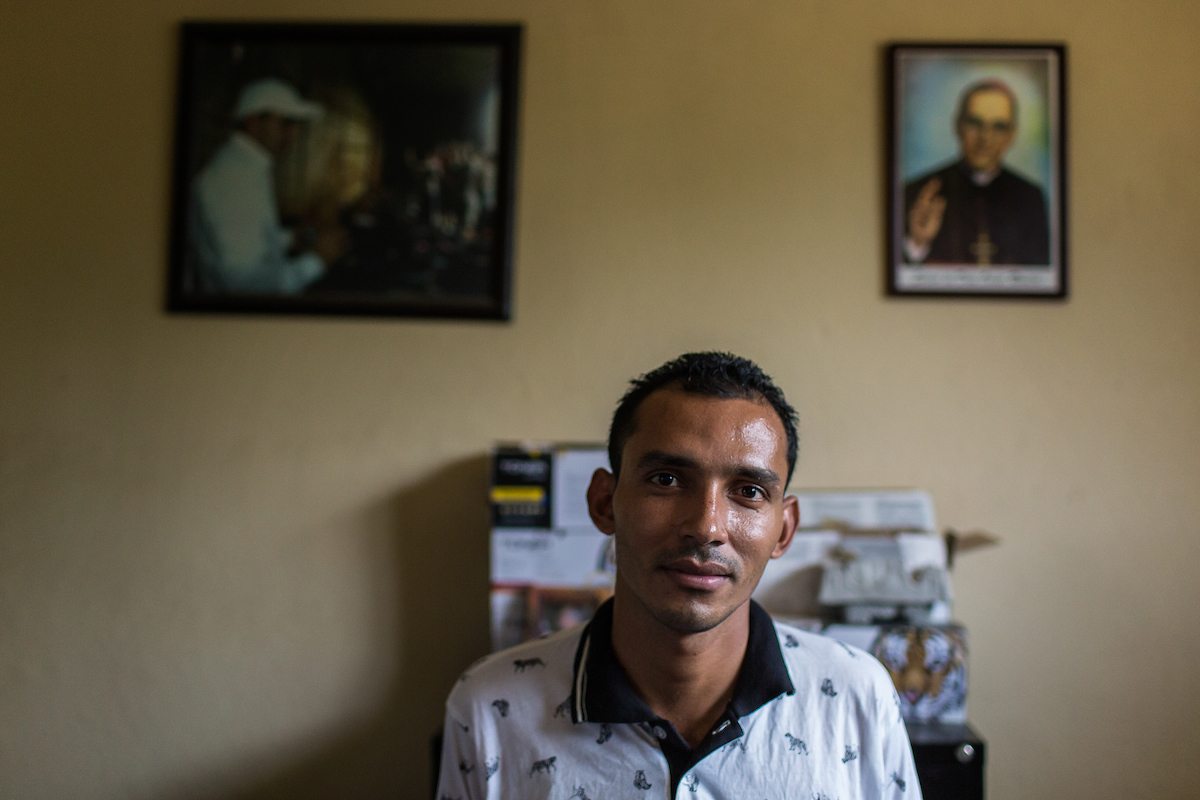
If Mexican efforts to halt illegal immigration and safeguard migrants’ journeys are working, it’s yet to be seen here, said Alberto Donis, the shelter director.
“They’re not controlling anything. It’s only leading to migrants taking a more difficult route,” Donis said. “What’s been diminished is their security. Now they are victims of everything.”

In Ixtepec, they walk by a large mural painted outside one of the shelter’s dormitories that serves almost as a motif of their journeys. One side depicts a happy family; the other a weary traveler. A sky-blue railroad crossing sign separates them, warning the migrants of the dangers they may face on their journeys: the train, police officers, bandits and immigration authorities.
Some have been caught and deported back to their home countries only to start the trek all over. Those that have made it this far are recovering from an unforgiving trek that for most has included assaults, dehydration and foot injuries incurred after their shoes literally fell apart.
From here, the migrants' routes will continue to diverge depending on where in the United States they're headed.
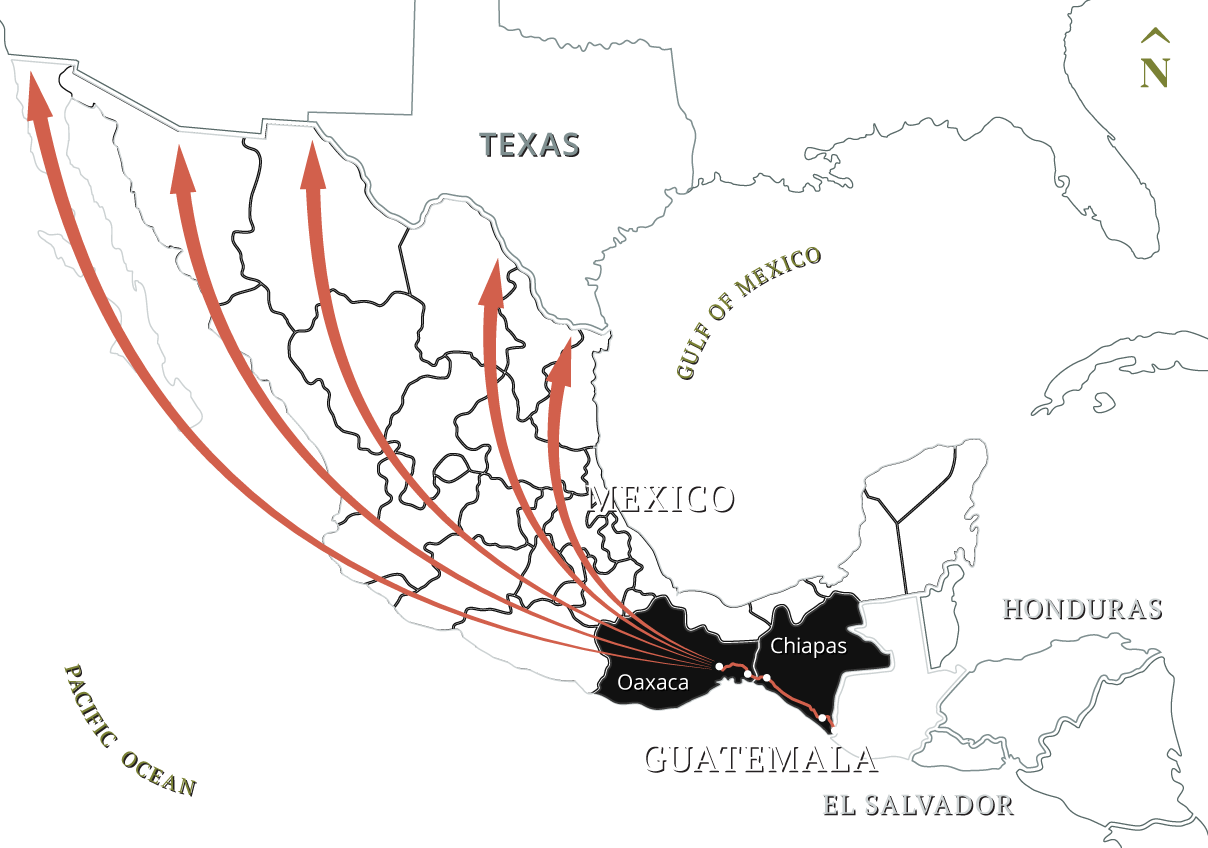

Whatever route they follow, the trip can be especially debilitating for the handful of pregnant women traveling north.
Dikenis Carias arrived at the Ixtepec shelter with his wife, Karina Romero, who was eight months pregnant. Traveling with their two-year-old, Jeremy Carias, they fled the insecurity that marked the last years of their lives in Honduras in hopes of reaching Texas to work. They were robbed as soon as they crossed into Mexico. Men with a gun and a machete took 2,143 pesos they had on them.

Despite his wife’s pregnancy, Carias said they couldn't afford to pay a coyote to help them get to the United States with fewer risks. So, like many other migrants, he says he’s holding on to his faith that all of this will be worth it.
"The biggest desire among those of us who migrate to these places is that our families have a better future,” Carias said, “Keeping in mind that if I’ve suffered through hunger, times when I traveled barefoot, times when I had to ask for a shirt or a pair of pants to wear — my biggest hope is that my children will never have to face that situation.”
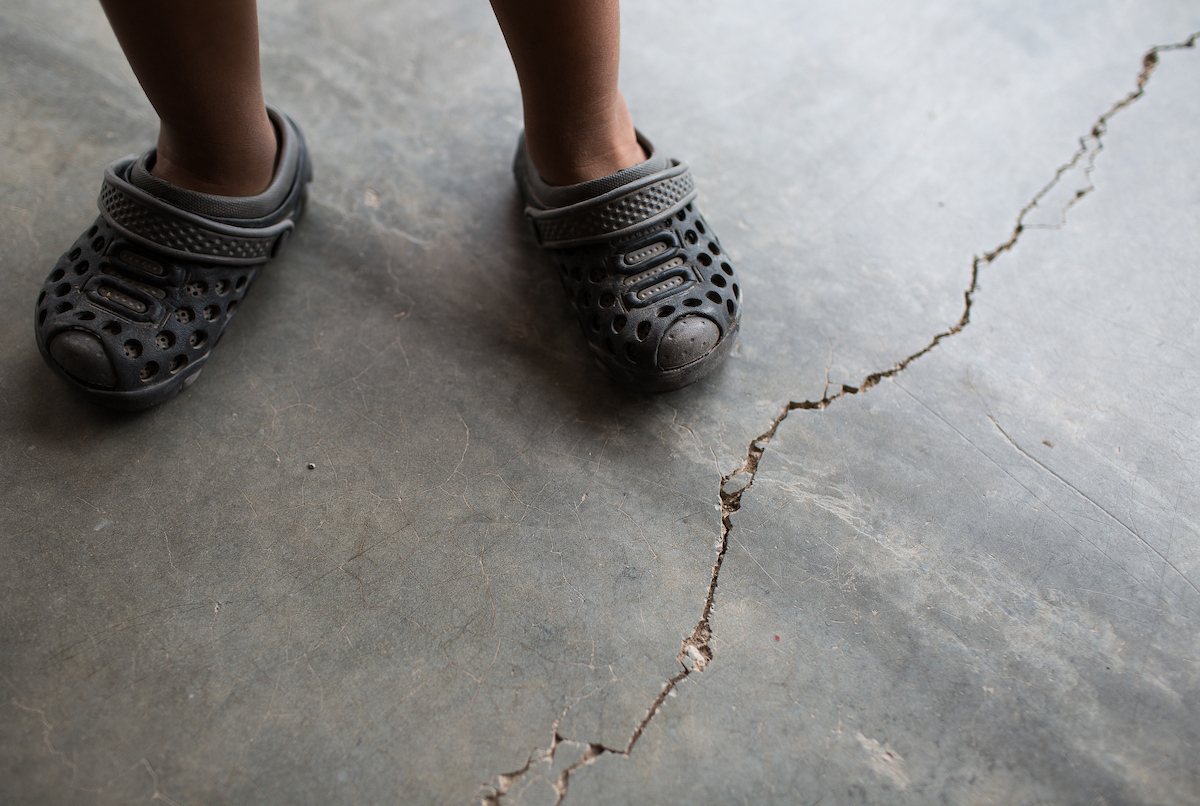
Carias and his family left the Ixtepec shelter a few weeks later. They traveled more than 450 miles to reach Mexico City, where his wife gave birth to their second child. Carias has taken on odd jobs and temporary employment to save up enough for the next leg of their journey.
Late last week, they traveled the last few hundred miles to Piedras Negras, Coahuila where, as of Sunday, they intended to cross the Rio Grande into Eagle Pass, Texas.
It’s unclear whether they’ll make it across.

No matter the barriers — natural or manmade — there's no reason to believe the torrent of migrants headed for the United States will cease soon. The desperation is clear in their tired eyes. The agony of the journey is apparent in their fatigued faces, their tattered shoes and their somber dispositions.
But their hope is made most palpable by the young children — bouncing around the shelters in pigtails and innocence, oblivious to the threats hanging over their lives. For many, they are the reason to bet everything on a journey from one river to the next.

The Texas Tribune is taking a yearlong look at the issues of border security and immigration. This part of the project focuses on how violent gang warfare and grinding poverty are driving new waves of Central American immigration to the United States. Sign up to get story alerts.
Credits
Reporting by Alexa Ura. Photography by Martin do Nascimento. Map design and story production by Ryan Murphy and Ben Hasson.
